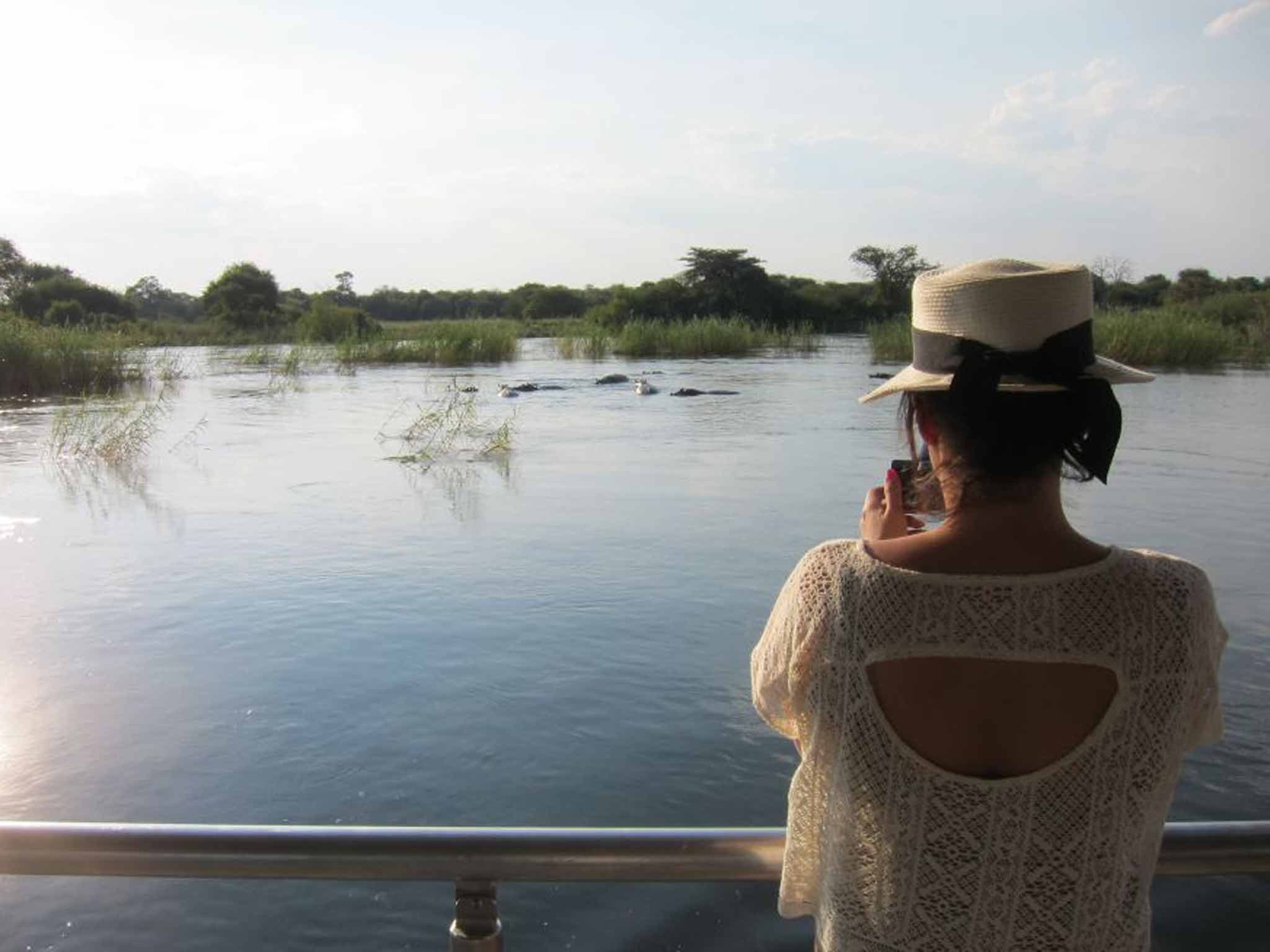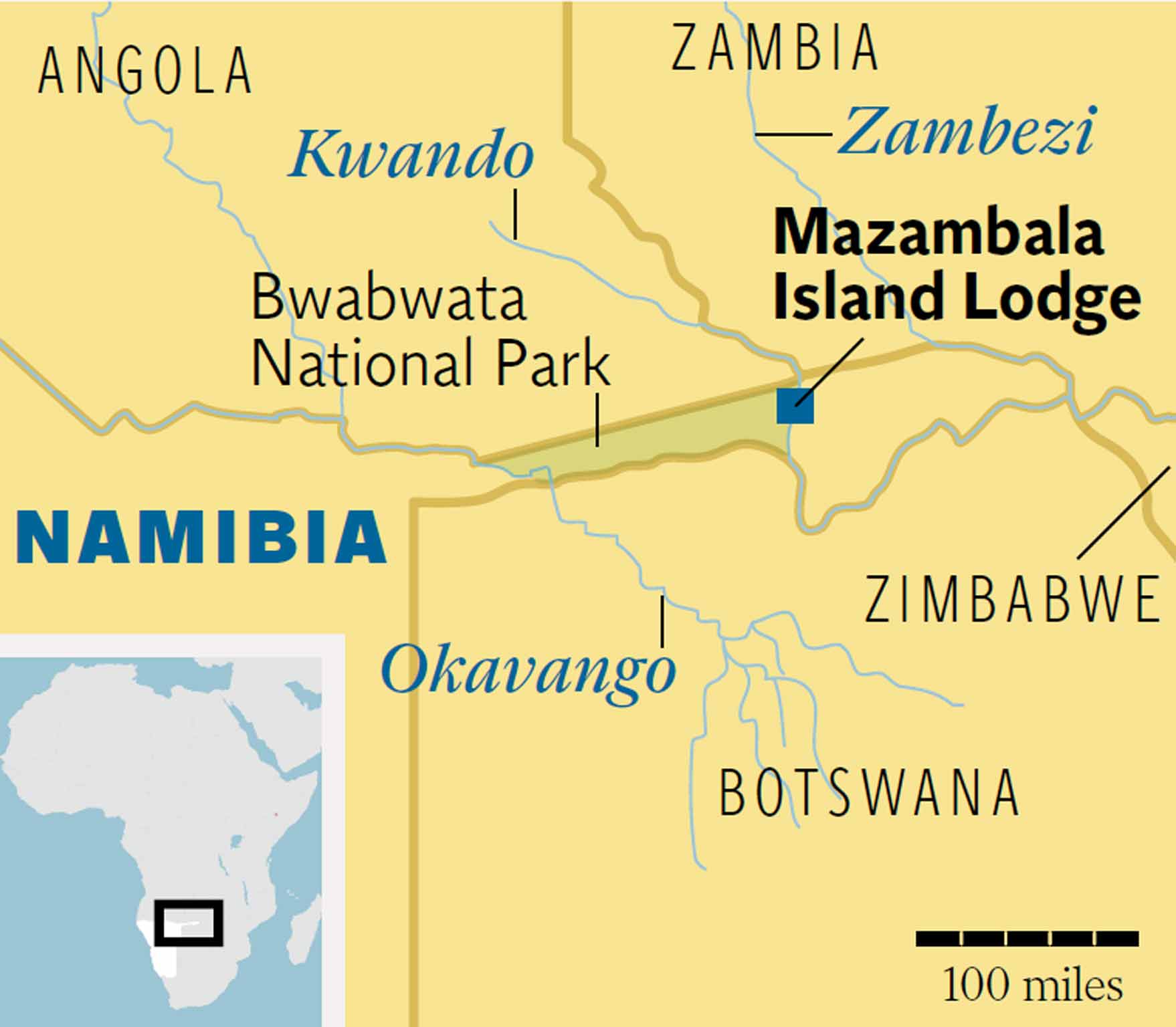The Independent's journalism is supported by our readers. When you purchase through links on our site, we may earn commission.
Safari in Namibia: Hippo spotting in Bwabwata National Park
This panhandle park teems with wildlife, but it wasn’t always so, writes Jeffrey Simpson

Your support helps us to tell the story
From reproductive rights to climate change to Big Tech, The Independent is on the ground when the story is developing. Whether it's investigating the financials of Elon Musk's pro-Trump PAC or producing our latest documentary, 'The A Word', which shines a light on the American women fighting for reproductive rights, we know how important it is to parse out the facts from the messaging.
At such a critical moment in US history, we need reporters on the ground. Your donation allows us to keep sending journalists to speak to both sides of the story.
The Independent is trusted by Americans across the entire political spectrum. And unlike many other quality news outlets, we choose not to lock Americans out of our reporting and analysis with paywalls. We believe quality journalism should be available to everyone, paid for by those who can afford it.
Your support makes all the difference.There was only one rule at my lodge deep in the Namibian bush – shut the gate leading to the water after dark. It was a necessary precaution to keep hippos from wandering among the thatched bungalows where we'd be sleeping on this remote island in Bwabwata National Park. But the fence intended to protect us was only knee-high – hippos can weigh 1,500kg and are one of the most aggressive species in Africa.
"It's OK," Stephanie Koortzen, who runs the Mazambala Island Lodge with her husband, Johan, assured me. "They can't jump."
Animals seeking out tourists were a nice twist on game-viewing in this north-eastern corner of Namibia. The lush wetlands and sprawling savannah of the 2,400sq-mile protected area in the Kavango and Zambezi regions – a sliver of land also known as the Caprivi Strip that extends into Angola, Zambia, Zimbabwe and Botswana – are teeming with wildlife. In addition to thousands of hippos, the 190-mile-long park is home to big game such as elephants, buffalos, lions and leopards, along with hundreds of species of birds.
"This is the real Africa," said Johan, who grew up in Namibia and has been running the lodge for a decade. "We have everything here." But it wasn't always that way.

Bwabwata was established in 2007 after wildlife was almost completely wiped out during years of armed conflict. The South African Defence Force occupied the region during Namibia's war of independence between 1966 and 1990, restricting access and preventing conservation efforts as poachers ran rampant.
In this, the 25th anniversary year of Namibia's independence, the animals are back – helped by an American initiative that relocated hundreds to the region. And the tourists have been slow to catch up, giving the area an off-the-beaten-track feel. In fact, all of Namibia seems relatively unvisited. The excellent highways – in a country over three times the size of Britain but with a population of only two million – are largely free of traffic, though road signs warn of elephants. The risks were obvious; one emerged from the bushes and plodded on to the asphalt as our tour van – dwarfed in comparison – sped past.
Bwabwata is an almost unrivalled place to see these massive animals, which migrate through the region from Botswana to Angola in their hundreds between April and September. "This is the only park in the world with mega-herds," Johan told me. The best way to see them and to explore the park is by boat, gliding along the reed-lined river channels. My group started its tour on the banks of the Okavango, which bookends the western side of Bwabwata. One of the largest river systems in southern Africa, it runs for nearly 1,600km from Angola through Namibia before emptying into Botswana.
There are plenty places to stay alongside it, from luxury lodges to rustic campsites. At Popa Falls, near the town of Divundu, the water drops four metres across the 1,200-metre-wide river, creating a series of pretty – yet slightly disappointing – rapids.
From there we travelled the smooth, empty stretch of highway to the flood plains of the Kwando river – which flows into the Zambezi – on the park's eastern side. After parking the van, we took a boat through the marshes the rest of the way to the Mazambala lodge.
The tidy compound had a treehouse feel to it with a restaurant and lounge in a 12-metre-high viewing tower amid palm and sausage trees, the latter named after the tube-shaped fruit that hangs from its branches.
We wasted little time before setting off in a boat to explore the narrow waterways, cameras in our hands and a well-stocked cooler at our feet.
It wasn't long before we spotted a crocodile sliding into the water amid the lilies. Antelope grazed in the grassy fields beyond the river banks. Pairs of nostrils and ears belonging to hippos emerged ominously above the water's surface, then disappeared a second later. At one point, our guide had us so focused on watching a wattled crane strut among the shrubs that we almost missed an elephant wandering out of the bush behind us for a quick drink.
Unfortunately, the big cats refused to reveal themselves. But there was some drama. With so many hippos in such a narrow channel, we got a bit too close to one cluster for their liking – just as our boat got stuck in the shallow water.
The dozen or so hippos started to snort warnings. Then one ploughed towards us – fast. I realised this was a serious development by the frantic noises coming from the guide and driver behind me as they struggled to get the boat moving.

The hippo – with three others close behind him – got almost within a metre of us before plunging under water. Certain that it was about to tip us over, I braced myself for an impact just as the boat broke free from the sandy riverbed and lurched forward. The hippo surfaced in our wake, exactly where we'd been a second earlier.
"The young hippos, they always show off," Johan told me later. "They are always the ones charging. But when you're in shallow water like today, you're actually much more safe because the hippo rarely comes out of water to attack you."
That was somewhat reassuring – but I still made sure nobody forgot to close the gate that night.
Getting there
Air Namibia (airnamibia.com) flies from Frankfurt to Namibia's capital, Windhoek, with UK connections. BA (ba.com) and SAA (flysaa.com) fly from Heathrow via Johannesburg.
Vulcan Ruine Tours & Transfers (vulcanr.com) has an eight-day safari for N$25,610 (£1,295) with game-viewing, transport, accommodation, meals, and park entrance. Flights not included.
Staying there
Mazambala Island Lodge (mazambala.com). Bungalows from N$550pp (£28), B&B, based on four sharing.
More information
Join our commenting forum
Join thought-provoking conversations, follow other Independent readers and see their replies
Comments